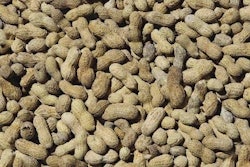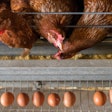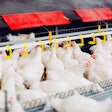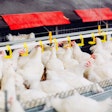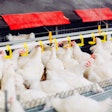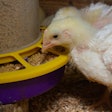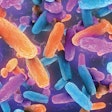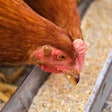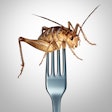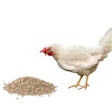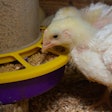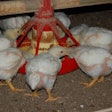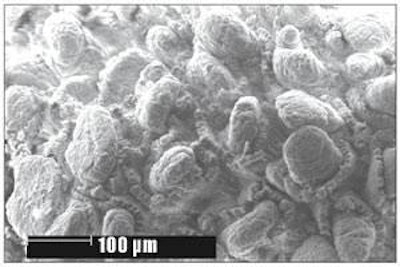
In the environment of modern poultry production, the links between health and nutrition are complex, but essential, to comprehend. Today, birds are under increasing pressure to perform without the crutch of prophylactic growth promoters. Poor gut health can seriously affect their performance, with reported losses in growth or efficiency of up to 30%, depending on the degree of gastric damage.
At last year's 'Bristol WPSA Avian Gut Function, Health and Disease' meeting, Professor John Brooker presented work led by Dr Tom Acamovic at the Scottish Agricultural Colleges Avian Sciences Research Centre linking gut damage, nutrition, and growth.
The gastro-intestinal tract (GIT) is host to a complicated system of inter-relationships between nutrition, immunity, bacteria, and tissue. The GIT needs a balanced nutrient supply to maintain its structures and environment in such a manner as to promote, rather than hurt, growth, health, and performance. The key, researchers at the Bristol meeting noted, is in the integrity of the intestinal tract and the lining of the gut walls. This dictates the ability of the epithelial cells to perform their important functions, including secreting mucus and enzymes, nutrient absorption, and active transport of nutrients into the blood supply.
Digestion at risk
All these attributes form an essential part in the whole concept of digestion. Without gut wall strength and integrity, nutrients are redirected for repair, or utilized by micro organisms, which can proliferate, causing disease or activation of the immune system
Several dietary factors affect gut function directly, including feed intake, the physical character of the feed, use of supplemental products, anti-nutritional factors, availability and balance of nutrients, and the presence of toxins, for example from fungal contaminants or mycotoxins. Animal factors also contribute. The genotype, sex, age, or stage of production, as well as the environment and microflora established in the gut, can all affect intestinal function and resistance to damage.
There are several examples of these effects:
- If feed intake in a young chick declines, then so does gut development. This increases the proportion of 'endogenous' losses (secretions such as mucin, enzymes, sloughed-off cells), which are excreted from the bird, leading to an overall loss of reserves from the body.
- Highly viscous feed with hard particles can strip off epithelial cells from the gut lining, again increasing endogenous losses. Larger particles of higher viscosity can also be more resistant to digestion, leading to higher levels of by-pass' nutrients being swept undigested down to the caecum where they are fermented by bacteria.
- Raw materials now come in an increasing array of types, increasing the need for pro-nutrients, such as enzymes, to ensure correct digestion and maintenance of the gut environment.
- Overheating feed materials for hygiene or dry matter purposes can damage essential nutrients such as amino acids and starch, making them less digestible. It also increases the occurrence of chemical complexing between proteins and non-nutrients' such as phenols, thereby reducing bioavailability of nutrients.
- The types and forms of nutrients are now known to be important in gut health for example, organo-selenium compounds versus chemical salts, and chelated minerals versus oxides and sulfates.
Recent work at the SAC Avian Sciences Research Centre has focused on using feed enzymes as models for increasing digestibility in the gut. There are several commercial phytases available for use in poultry feeds, and many commercial diets are now supplemented as a matter of course with one or more enzymes to ensure adequate digestion. Enzymes have been shown to increase metabolizable energy levels, promote protein and mineral retention, and reduce endogenous losses.
A clear relationship has been established showing that with an increase of endogenous losses, there is a corresponding decrease in metabolizable energy (see figure 'Phytase').
Maintaining the correct balance
Such findings demonstrate the link between preserving gut efficiency and nutrient availability. As the bird's nutrient-reserve-to-nutrient-supply ratio gets out of balance with increased relative losses from dead or senescent cells, enzymes, and mucus the amount of energy available for growth declines.
At the Bristol meeting, Professor Brooker was at pains to point out the importance of the balance of the nutrients taken as a whole, rather than the absolute levels of any single factor. Although in certain areas such as mineral nutrition this has been well-documented, it also holds true for all other nutrients, particularly energy and protein, as they all interact with each other producing effects of deficiency or excess, depending on the imbalance.
Effective feed ingredients
The Scottish research has also involved investigating the role of enzymes and other ingredients on gut status and nutrition. The quality and development of new feed ingredients is a key factor in the ability to control gut damage, as mode of action can vary substantially between seemingly similar products. One specific enzyme product may, for example, be effective at digesting certain anti-nutritional factors, reducing their impact on digestibility. Another, similar but less specific, product may go a step too far and release more anti-nutritional factors from the feed, resulting in a much greater problem than observed in the unsupplemented diet. This holds true for certain enzyme products that are less discriminate in the digestion of fiber, and can solubles more fiber as a result, promoting viscosity in the gut.
Non-nutrients' are often neglected in research, yet they have an important part to play. Dr Acamovic's team is one of the few who specialize in this subject, and have been involved in the study of non-nutrient factors such as phenols and terpenes. As components of feedstuffs, these compounds can directly interact with nutrients to reduce their availability to the animal. Phenolics such as tannins can bind minerals, carbohydrates, and protein and may even physically damage gut wall tissue by their sloughing action as they pass through. On the other hand, certain non-nutrients can be beneficial. Tannins, for example, can bind micro organisms or toxins from disease-causing bacteria or fungi.
Importance of gut health promotion
Overall, the research conducted at the SAC has examined a range of factors affecting nutrient availability and its relationship to gut tissue. This work especially highlights the complexity of interactions between factors in the feed, nutrients, and tissue. Dr Acamovic commented in the published abstract that, as the availability of certain drugs and other pro-nutrients declines in the face of regulatory pressure, the efficacy of good quality feed ingredients will increase in their absence.
Professor Brooker concluded by stating that, in the future, the health status of European broiler flocks will be dictated increasingly by management and the quality and quantity of nutrients and their balance in the overall nutrition of birds. His forecast was that the role of nutrition with respect to gut health will attain greater importance.


